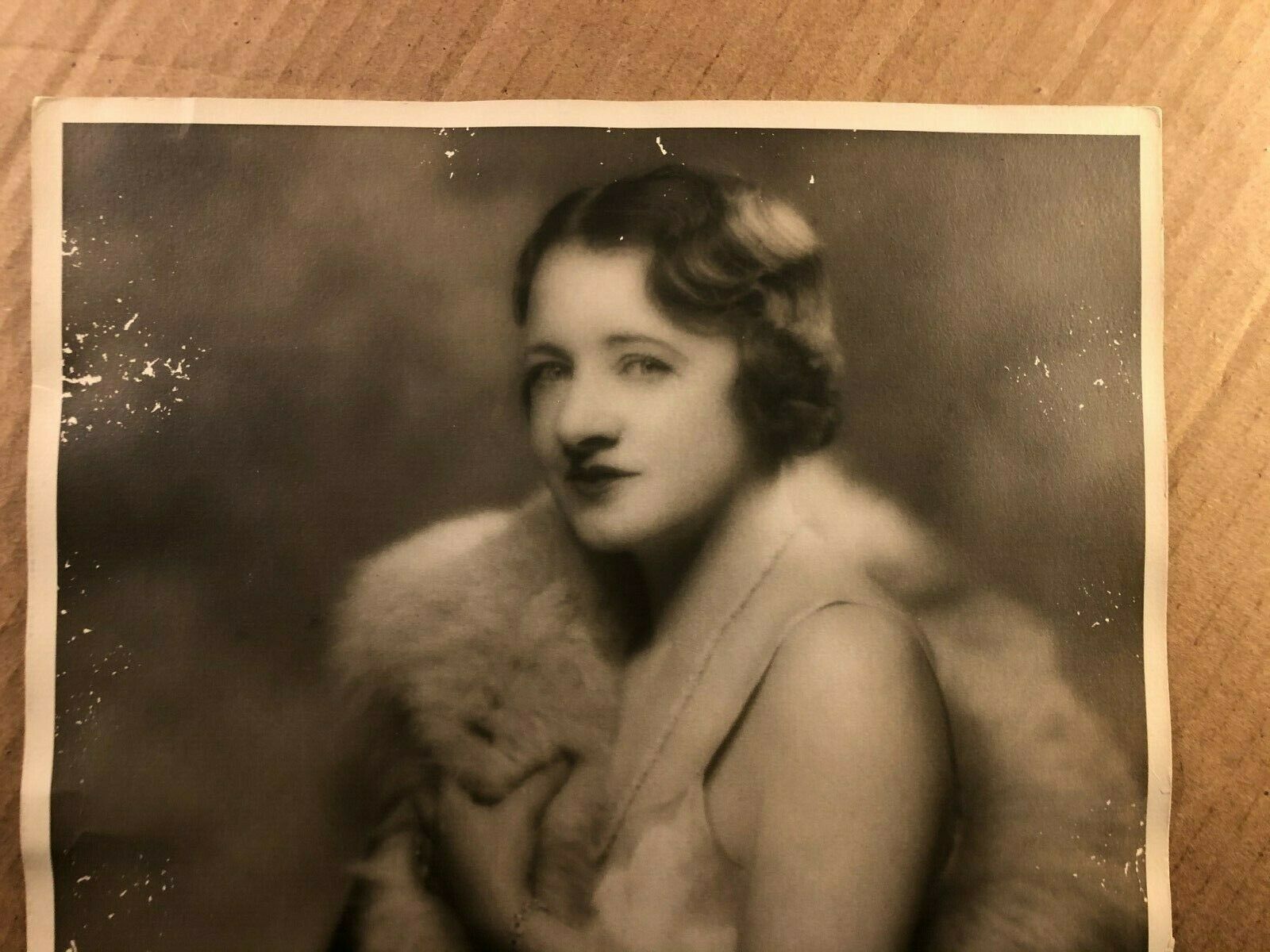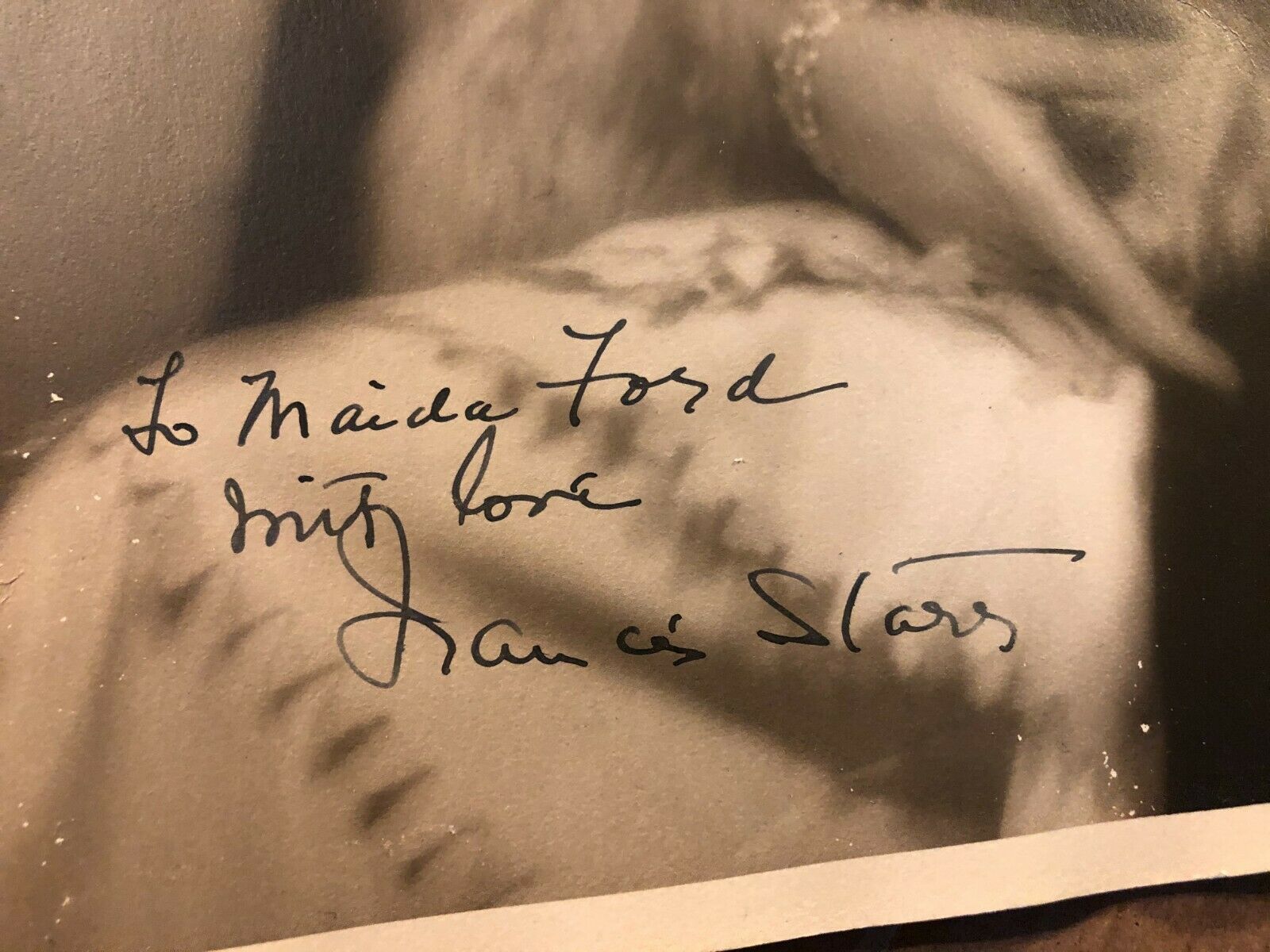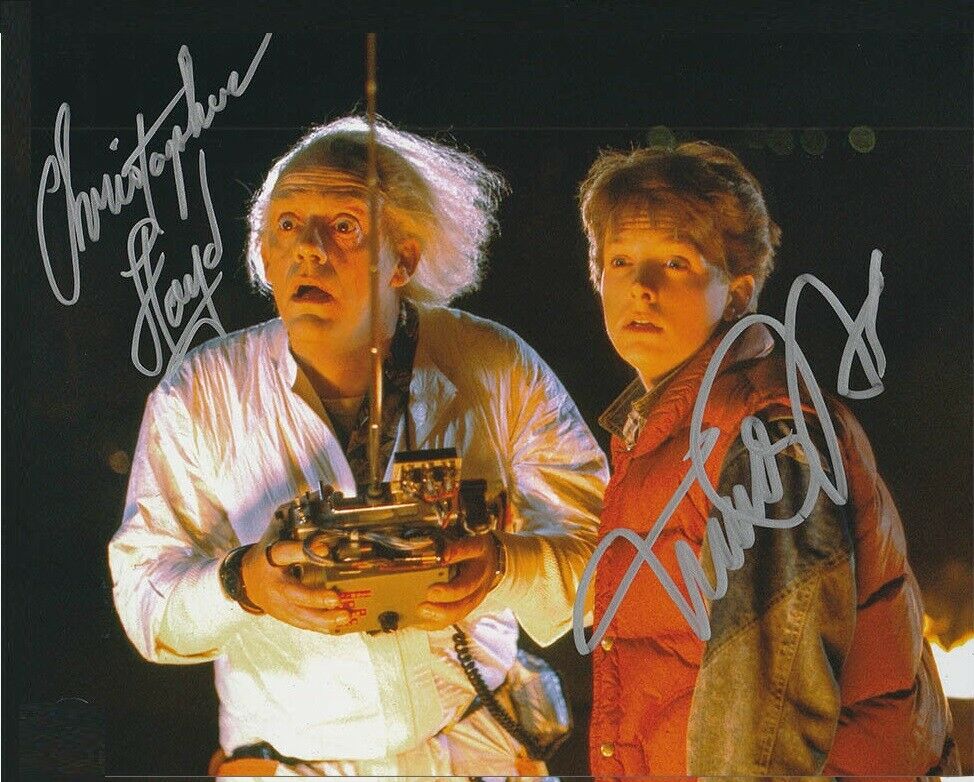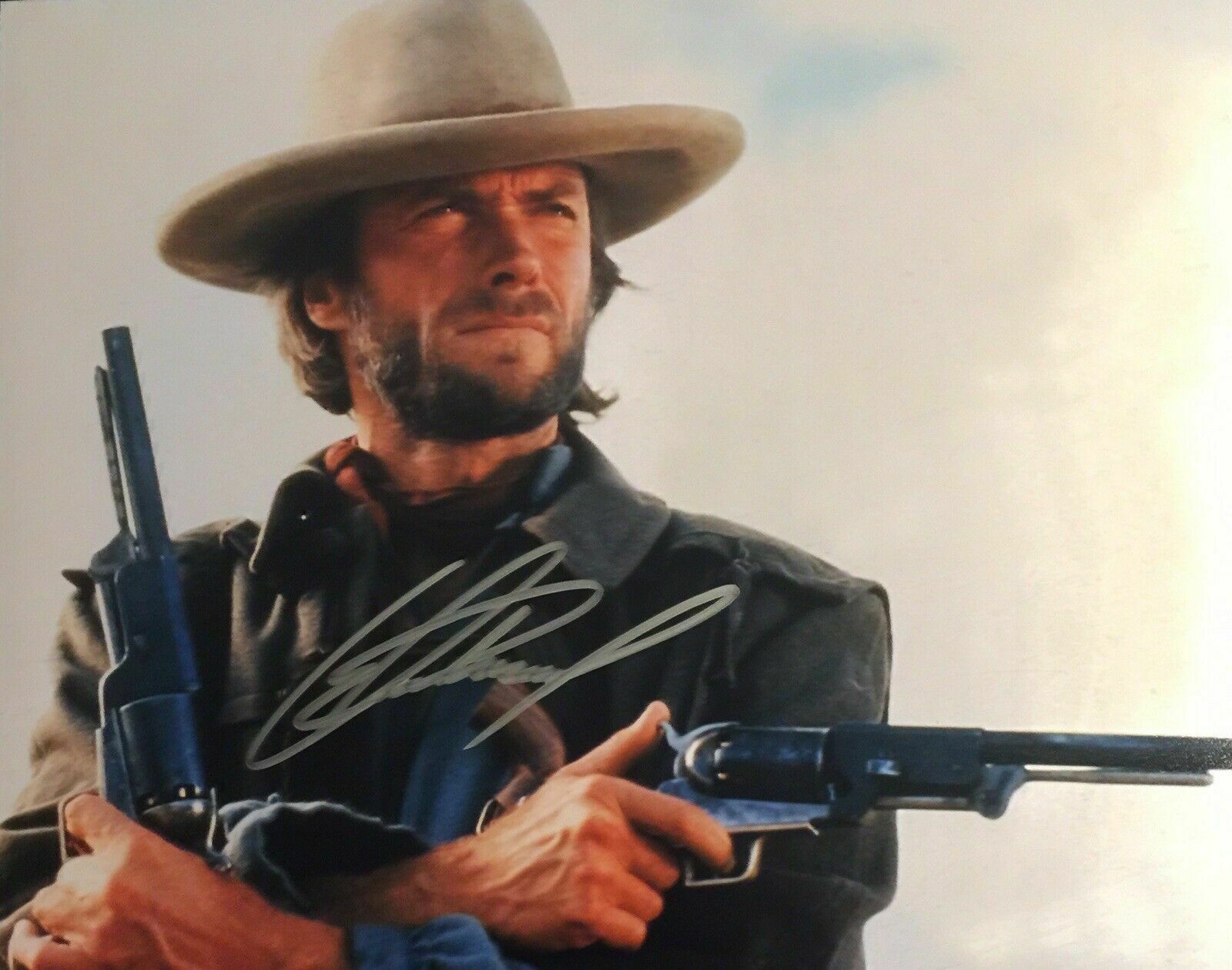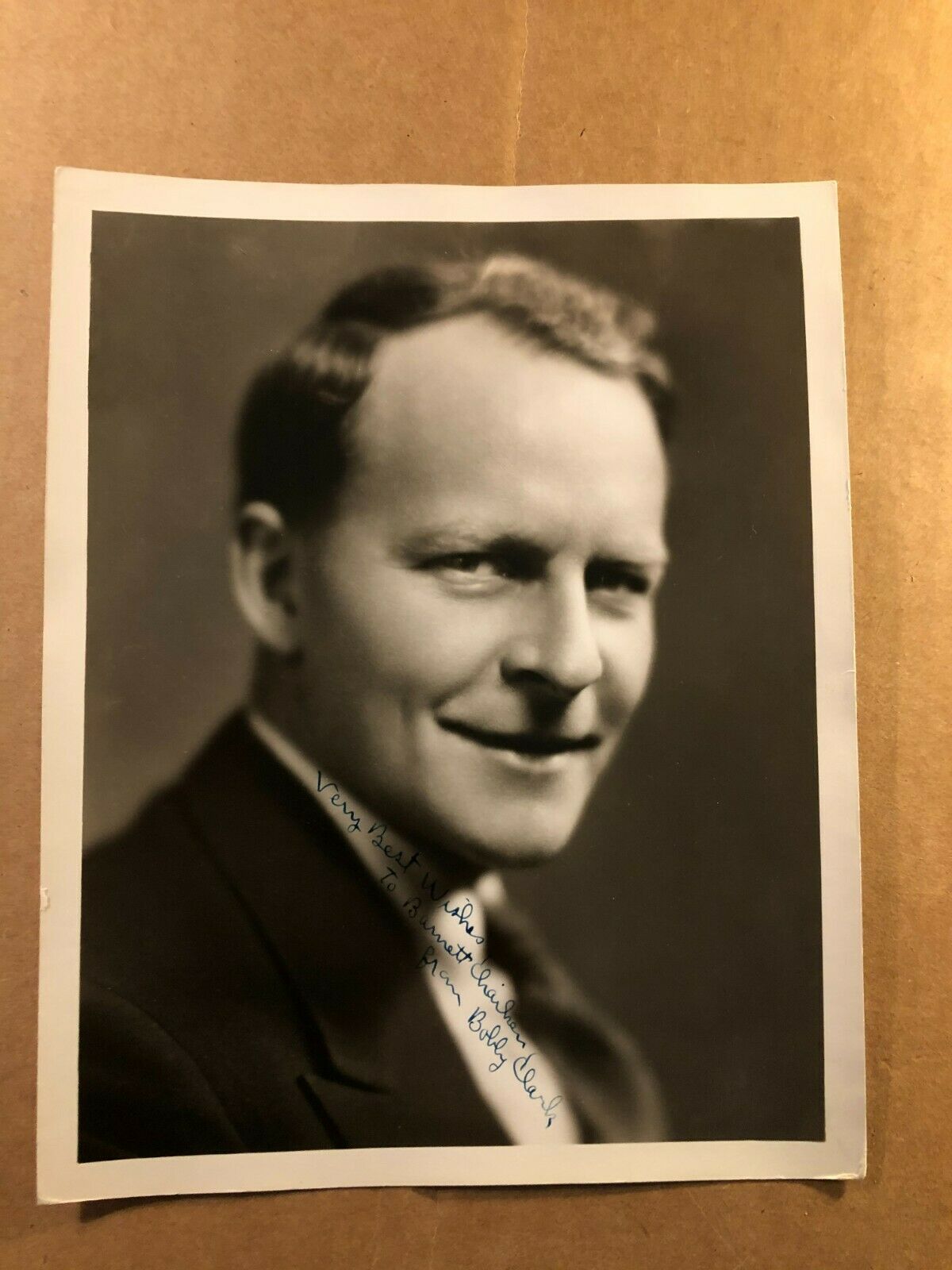-40%
Frances Starr Very Rare Early Original Autograph Oversize 11/14 Photo Five Star
$ 49.09
- Description
- Size Guide
Description
Here is an extremely rare very early vintage original autographed oversize 11" by 14" photo of film, TV, and theater actress Frances Starr (June 6, 1886 – June 11, 1973), from the 1920s. Hand-signed by famous photographer Herbert Mitchell. Starr started in plays in 1901 in an Albany stock company, in which Lionel Barrymore and Alison Skipworth were members. She signed with David Belasco in 1906 and appeared in a small role with David Warfield in The Music Master.In November 1906 she appeared along with another young actress, Jane Cowl, in The Rose of the Rancho. She achieved her breakout stage role in 1909 in Belasco's production of The Easiest Way. Starr continued to have a string of successes such as The Case of Becky (1912) and Shore Leave (1922). Several of the plays she starred in were turned into early silent films often by Famous Players-Lasky.
She delivered a standout role as the wronged mother in Five Star Final (1931), an early talkie about newspaper corruption starring Edward G. Robinson. It was her second of only three sound films. Lastly she appeared in This Reckless Age (1932) with Buddy Rogers and Richard Bennett. On television, Starr appeared on Studio One, Omnibus, Kraft Television Theatre and other programs.
Frances Starr died on June 11, 1973, aged 87. Spots of paper loss left and right sides, minor bends and creasing. Extremely rare.
Will ship worldwide. I always combine shipping on multiple orders.
On the photographer, Herbert Mitchell:
Born Daniel Epstien, Herbert Mitchell left his native Poland with his family, fleeing the Czarist pogroms, shortly after the turn of the 20th century. The Epstiens settled in New Jersey. Visually creative, Mitchell taught himself to paint in his early teens using found materials. In 1915 he secured a job as set painter at a B.F. Keith Vaudeville theater on Broadway. He used his backstage access to celebrites as occasions to create on-the-scene caricatures that he sold to the Hudson Dispatch newspapers. "The Boy Cartoonist" was soon contributing lobby sketches of performers to the B.F. Keith theaters.
After a brief experiment producing short animated entreacte films for the Palace Theater, Mitchell established Mitchell-Strand N.Y.C. studio at 1579 Broadway in 1922-23. There, he produced "cartoons, caricatures, and artistic photographs." Graphic work dominated his output until 1928 when Herbert Mitchell broke into the magazine market with his photographs.
His earliest work displayed his painterly disposition in backgrounds which he painted on the negatives. This made Mitchell a participant in the new Broadway school of celebrity photographs (other members included M.I. Boris, George M. Kesslere, and John De Mirjian) who defied Hollywood hyper-realism by making the hand of the artist visible in the image. Herbert Mitchell preferred abstract patterning or indeterminate zones of light or dark. His elegantly retouched faces had a quality of sculptural palpability that enabled him to thrive in the 1930s when taste turned toward a humane style of portraiture. During the 1930s, he vied with Irving Chidnoff, G. Maillard Kesslere, Hal Phyfe, and Florence Vandam for the main place in theatrical portrait market. For financial reasons he would form short-lived partnerships with other artists, Ralph Oggiano (a student of M.I. Boris), and James Kriegsmann most notably.
Silver shortages and an unwillingness to do West Coast movie shoots drove Mitchell into bankruptcy in 1940. James Kriegsman, Mitchell's retoucher for most of the later 1930s, purchased the business in 1940 and rebranded it. Mitchell Fendberg Studio on 4th Avenue changed its named to Mitchell Studio to parasitize Herbert Mitchell's reputation.
Herbert Mitchell's later life proved as incident-filled as his earlier. He and Ed Hutchinson pioneered the theater restaurant idea in the 1930s. He also was a force in the introduction of Cuban rhumba music into American entertainment. But his primary efforts post-1940 were absorbed in brokering the partnerships that enabled the wartime electronics industry to organize on a national scale. A portion of his posthumous archive of photograph prints was sold at public auction by Swann Galleries on February 26, 1987.
NOTES: "Business Records," New York Times (Apr 29, 1940), 33. Biographical materials supplied by Howard R. Mitchell, Herbert Mitchell's son. David S. Shields/ALS
Specialty:
Mitchell was a master of floating heads and the waist-up portrait shot with sitters posed at an angle 25-50 degrees off center. By frequently employing light toned patterned or plain backgrounds, he endeared himself to periodical photo editors for whom the dark backgrounds favored by art photographs presented reproduction difficulties. He never used props. He preferred shooting personalities in their own clothes rather than costumes. He had a talent for suggesting that the sitter was absorbed in thought or amused at his or her surroundings. He signed his best pieces in white ink.
In the 1930s he offered the following observations about facial features and their contribution to attractiveness. "A large mouth is more alluring than a perfectly-shaped small one for it denotes a gay, magnanimous character. Eyes are most important. Large, soulful ones or narrow, deep-set eyes each have a very definite attraction . . . you cannot make up a certain set of rules. Little irregularities make a face more interesting."

